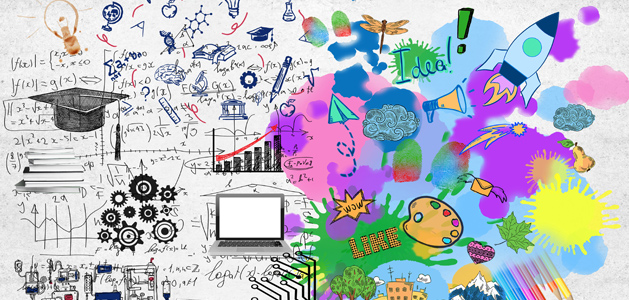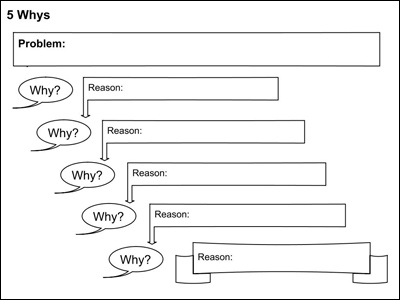
How STEM and PBL go hand in hand

We are currently experiencing the fastest pace of change in history… and this pace is only going to increase with time. Success in this rapidly-changing economic, social, and political environment requires problem solving and innovation in a way never seen before. Occupations in science, engineering, and technology are growing at rates faster than other occupations, but fewer and fewer students are either qualified or interested in pursuing careers in these areas.
To respond to these challenges and better prepare students for a future filled with change, many educational institutions have begun taking a STEM approach to student learning. The movement to STEM not only focuses on additional instruction in the disciplines of science, technology, engineering, and math, it takes a holistic approach to that instruction, breaking down the artificial academic silos between them. The integrated approach to instruction in these areas is designed to not only improve student achievement in each of them, but also to better reflect the knowledge and ways of thinking needed for successful problem solving and innovation in today’s economy.
Many institutions have also been moving toward project-based learning, or PBL. In this instructional approach, students don’t simply learn content and then apply it in a project; the traditional approach to content learning is flipped on its head. In a project-based approach to learning, students are first presented with a real-world problem or issue and then learn the content necessary to answer questions they have derived in response to the problem. During the process of questioning, research, ideation, and developing solutions, students build the problem solving, project management, collaboration, and leadership skills necessary for success in the world beyond the classroom.
These two approaches are not mutually exclusive. In fact, taking a project-based approach to learning can help you implement successful STEM learning in your classroom or school! Here are five reasons why PBL can you meet your goals for STEM learning.
Great PBL focuses learning around real world problems, providing a clear connection between what is learned in school and how it is relevant beyond the classroom. The authentic nature of these problems and issues means they are both complex and messy, requiring students to draw on knowledge across disciplines and expertise in many areas. Innovators in our economy don’t limit themselves to one area when they consider these problems; they explore and pull from “scientific, mathematical, artistic, or social elements” as the work to develop solutions.
The goal of project-based learning isn’t to cover; it’s to uncover. Project-based learning is an inquiry approach that requires time for students to make connections between the problems they are facing, to think about what they already know, and to develop lines of inquiry for new content they “need to know.” This specific context and need to know helps them not only identify and avoid misconceptions, but connect facts and information as they apply knowledge to solve, evaluate, and reflect on specific situations.
The Buck Institute for Education (BIE.org) often refers to project-based learning as a “deep dive” into content. The project-based focus on depth over breadth helps students develop deep understanding of content both in specific disciplines, as well as see how this content connects across disciplines.
The open-ended nature of a project-based approach, one that isn’t looking for a correct answer, fosters both the analytical and creative thinking necessary for innovation. Great questions for project-based learning don’t lead to students jumping into answers; they lead to even more questions.
For example, a project-based approach to learning might ask students to consider: “How do we make cafeteria lunch healthier?” In response, students may ask, “Do you mean healthier for students or do you mean healthier for the planet?” Even if students only focused on healthier for students, they need ask:
You can support their questioning skills with graphic organizers, like KWL charts and 5 Whys organizers.

Create a Graphic Organizer
Need a thought web, timeline, flowchart, or other graphic organizer for a lesson?
CreateAs a result of their questioning, students work may focus on finding ways to make existing lunch options healthier or their work may focus on developing new options entirely. The real world problems and challenges used in a project-based approach, don’t provide the content and ask for an expected response, they require intensive questioning as well as the analytical thinking and creative problem solving needed for success in STEM.
“We don’t learn from experience, we learn from reflecting on experience.“
John Dewey
The process of project-based learning is recursive and requires extensive reflection for successful solution development. As student work to develop ideas and implement them, they are constantly asking questions like:
The reflective nature of the project-based process helps students make connections between content they are learning and how it impacts their thinking and problem solving. How well they can find and utilize that knowledge helps them better understand not only what they are learning, but how they learn.
Taking a project-based approach to STEM learning can help students form deeper connections to content, connect ideas across disciplines, and build the questioning, thinking, and metacognitive skills necessary for success in today’s rapidly-changing world.
Creative Educator can help you bring project-based learning to your school.
Learn More8 first projects to get students using technology
Creative, digital book reviews
Fun and powerful ideas with animated characters

Wixie
Share your ideas, imagination, and understanding through writing, art, voice, and video.

Rubric Maker
Create custom rubrics for your classroom.

Pics4Learning
A curated, copyright-friendly image library that is safe and free for education.

Wriddle
Write, record, and illustrate a sentence.

Get creative classroom ideas delivered straight to your inbox once a month.
Topics